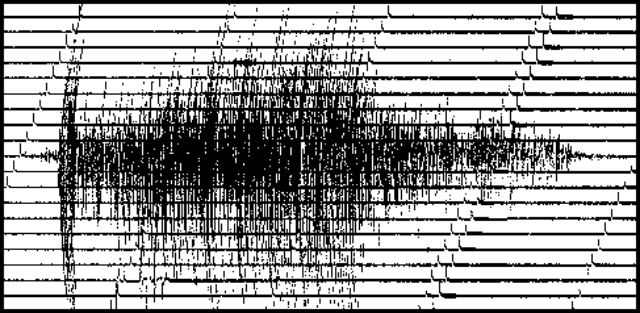Report on Galeras (Colombia) — July 1995
Bulletin of the Global Volcanism Network, vol. 20, no. 7 (July 1995)
Managing Editor: Richard Wunderman.
Galeras (Colombia) Minor gas emissions and seismicity
Please cite this report as:
Global Volcanism Program, 1995. Report on Galeras (Colombia) (Wunderman, R., ed.). Bulletin of the Global Volcanism Network, 20:7. Smithsonian Institution. https://doi.org/10.5479/si.GVP.BGVN199507-351080
Galeras
Colombia
1.22°N, 77.37°W; summit elev. 4276 m
All times are local (unless otherwise noted)
Observations during June-July revealed continued low levels of gas emission from fumaroles and craters in the W sector of the active crater. Long-period seismic events, associated with gas movement, decreased in June compared to previous months. SO2 flux measured by COSPEC was correspondingly low during June, averaging of 100 metric tons/day, and remained low in July. No significant deformation was detected during this period.
Seismicity in June consisted of fracture events from the source 2-6 km NE of the main crater, with a daily average of two events (M <=2.6) at 4-10 km depth. Two earthquakes within 4 minutes late on 17 June (M 3.6 and 3.1), caused by fracturing ~4 km SE of the volcano at ~6 km depth, were felt near the epicenter; small aftershocks were felt over the next few days. The epicenter of these events was near the Azufral river canyon, along which mudflows moved in April.
During 21 hours on 5 July an earthquake swarm of 35 events was centered NNE of the active crater; all events had M <2.3 and depths of 2-7 km. In the same zone on 28 July a M 2.8 volcano-tectonic event occurred that was felt in Pasto. Both the swarm and the 28 July event were associated with rock fracturing from the area active during April and November 1993, and March 1995. Seismicity related to magma movement decreased to six events during July. A significant shallow event on 26 July (figure 78) had similar characteristics to the sporadic events that have been registered since 6 March over the NW area of the caldera margin. These events are thought to be associated with the April 1995 landslide.
 |
Figure 78. Seismogram of the event detected by the Cono Station at Galeras on 26 July 1995. Courtesy of INGEOMINAS. |
Geological Summary. Galeras, a stratovolcano with a large breached caldera located immediately west of the city of Pasto, is one of Colombia's most frequently active volcanoes. The dominantly andesitic complex has been active for more than 1 million years, and two major caldera collapse eruptions took place during the late Pleistocene. Long-term extensive hydrothermal alteration has contributed to large-scale edifice collapse on at least three occasions, producing debris avalanches that swept to the west and left a large open caldera inside which the modern cone has been constructed. Major explosive eruptions since the mid-Holocene have produced widespread tephra deposits and pyroclastic flows that swept all but the southern flanks. A central cone slightly lower than the caldera rim has been the site of numerous small-to-moderate eruptions since the time of the Spanish conquistadors.
Information Contacts: Carlos Alberto Rey and Pablo Chamorro, INGEOMINAS - Observatorio Vulcanologico y Sismologico de Pasto, A.A. 1795, San Juan de Pasto, Narino, Colombia (URL: https://www2.sgc.gov.co/volcanes/index.html).

